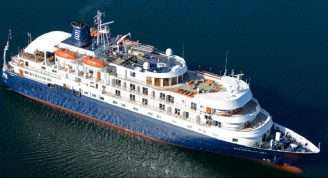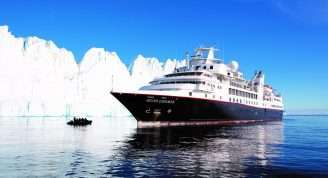Description
Neon-lit cities, jagged skyscrapers; paths running under vermilion torii gates that lead to sublime Shinto shrines; ancient forests; exquisite gardens; smoking volcanoes; centuries-old Buddhist temples: it’s no wonder that Japan tops a travel wish list. Explore the southern part of the Land of the Rising Sun on our 11-night South Japan cruise around the Seto Inland Sea and East Sea (Sea of Japan), including the western end of Honshu island, Kyushu and Yakushima islands, with a short hop to South Korea. From poignant memorials in Hiroshima and Nagasaki to friendly cities and colourful gardens, experience this varied region on board our boutique expedition ship and discover a country that stirs the emotions.
Trip Name
South Japan Expedition
Days
12
Overview
Vessel Type: Expedition Ship
Length: 115 meters
Passenger Capacity: 152
Built: 2020-2021
Arriving in November 2021, our 5 star elegant Scandi-design boutique ship offers you an intimate setting from which you will be fully immersed in all the sights and scenery of your voyage.
Introducing SH Minerva
Our brand new ship has been designed to journey to off the beaten path destinations and remote polar regions in style and comfort. The ship incorporates a PC5 ice-strengthened hull combined with extra-large stabilisers to make your journey as smooth as possible.
Sophisticated Elegance
We know how important outdoor space is, so our spacious, relaxing public spaces provide wide open, unobstructed views throughout the ship. The destination will always be in view.
Your Wellbeing
The safety & happiness of our guests is paramount to our 120-strong crew on board as well as our passionate expedition team who'll be serving up thrilling shore excursions and lasting memories.
Cabin Types
Our 76 cabins including 6 suites have all the amenities you will need to feel comfortable including dressing gowns, hairdryers, personal safes and minibars. Our stylish cabins all have desks, a dressing area and comfy seating. En suite bathrooms all feature glass-enclosed rain showers.









